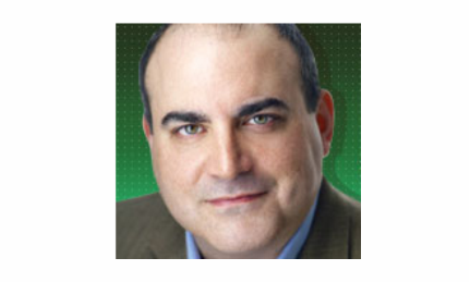Truthiness in a Connected World-Part 1 - Shelly Palmer - MediaBizBloggers

Over the next few weeks we are going to explore the concepts and constructs of Truth (with a capital "T"), truth (with a lower case "t"), truthiness (as coined by Stephen Colbert), reality, wikiality (also coined by Stephen Colbert) and facts as they apply to our connected world.
What is True? (I don't really want to delve into the metaphysical or philosophical nature of truth. I'm simply trying to help us define and label a baseline.) Are facts true? By definition, they are. Barack Obama won the presidential election and is, at this writing, the President of the United States. This is a fact. By definition, it is true.
I have a new favorite quote (that I truly overuse) by the late Senator Daniel Patrick Moynihan "… you are entitled to your own opinion, but you are not entitled to your own facts." We can all agree that facts are true, can't we? No, we can't. Here's an experiment my son (and co-author) Jared devised to test the practical existence of fact.
Objective: Explore the way facts, truth, and narrative affect crowds and groups. Observe the relationship between fact, truth, and narrative and apply the findings to the future of social networking, news, and mass media.
Apparatus: A ball is dropped off a table. The ball has a special coloration and pattern such that people who are colorblind see it as a distinctly different color than people who aren't colorblind. After having the subjects view the event, they will be asked to describe it.
Hypothesis: Everyone will agree on the fact that the ball dropped. We will call this a "supercluster." The colorblind individuals will say that the ball was one color, the non-colorblind people will say that the ball was another color. There will also be at least two distinct "truth clusters," those who are colorblind and those who are not color blind.
My son spends a little too much time in his college physics lab, but I like the physics metaphors we are using here because information seems to travel in particles and waves, just like energy. Here's how 20th century physics might help you think about the 21st century information problem we're discussing.
What is true in the 21st century? With a little bit of help from Einstein's special relativity, we know that 1. There is no way to distinguish between reference frames and that 2. The laws of physics hold true in all reference frames.
In one of Einstein's famous gedanken(thought) experiments he showed that simultaneity is relative to the observer. Although relativistic effects such as time dilation and length contraction can't be seen day to day, there are some important implications of Einstein's postulates. No two people observe the same event the same way, and both observers are correct though the numerical values of physical observations may differ. If that's the case, then what actually happens? Who is right and who is wrong? Who can be trusted? Examples:
Barack Obama is the president of the United States of America North Carolina is closer to the North Pole than South Carolina. There was a ball in the aforementioned experiment that hit the floor.
A Truth, according to m-w, is "the state of being the case; the body of real things, events, and facts. A judgment, proposition, or idea that is true or accepted as true; the property (as of a statement) of being in accord with fact or reality" Examples:
The ball was blue The ball was red. The ball was painted such that colorblind people thought it was a different color than those who saw it who were not colorblind.
Truth, Narrative Authority, Reality and Wikiality
Stephen Colbert coined the term "truthiness." I like it! This idea will become surprisingly important in the future as the source of news becomes more important. Here's the dilemma:
1. A left-wing cable news show reports some aspects of a physical event.
2. A right-wing cable news show reports other aspects of the same physical event.
3. My friend on Twitter, who claims to have been a witness, reports other aspects.
4. My friend on Facebook, reports some mixture, without any qualifying statements.
5. Another friend on Facebook or Twitter, writes an opinionated statement about the event.
So, what actually happened? What is fact and what is narrative? Who has more truthiness? What is the reality? What is the Wikiality? Are these the same? Which source should I trust? Who has the narrative authority?
The way to solve this problem is to filter and give weight to each source. Marshall McLuhan said, "the medium is the message," but in the 21st century we say, "the median is the message." If you are going to report the news, then you are going to have to be able to make the distinction between fact and fiction, truth and narrative, reality and wikiality. The median, the measure of the central tendency, will become the accepted truth -- along the same lines as political philosopher John Stuart Mill's idea of the tyranny of the majority. Stephen Colbert coined this idea as "Wikiality." Urbandictionary.com defines it as: "a reality as determined by general consensus rather than cold hard facts. If enough people say it is true, then it is true." J.S. Mill noted that the majority isn't always right, it just so happens to be the most accepted. If we think about each physical event as a single data point, then the lines we draw to connect these lines can be thought of as the narrative. Think about giving meaning to random events as the equivalent of statistical curve fitting.
The accepted narrative will either be the most compelling to us, or the one that is closest to the Truth. Maybe the best narrative doesn't even connect all the lines, perhaps it is merely a line of best fit. Regardless of its shape, adding narrative comforts us because it lets us piece together random events -- giving life a seeming progression and meaning and the ability to cope with nihilism.
Under these circumstances, it makes sense that the key to narrative authority and Truth dominance is to tap into this narrative addiction and give the consumer/user/audience the most truthful data points or the most compelling narrative.
But what happens when the truth is not the most compelling narrative?
To be continued.
Shelly Palmer is the host of MediaBytes with Shelly Palmer, a daily show featuring news you can use about technology, media & entertainment. He is the author of Television Disrupted: The Transition from Network to Networked TV (2008, New York House Press) and the upcoming, Get Digital: Reinventing Yourself and Your Career for the 21st Century Economy. (2009, Lake House Press). Shelly is also President of the National Academy of Television Arts & Sciences, NY (the organization that bestows the coveted Emmy Awards). For information about Get Digital Classes, visit http://www.shellypalmer.com/seminars.Watch Digital Life with Shelly Palmer Tuesdays at 10p ET on WNBC's NY Nonstophttp://www.shellypalmer.com/digitallife.
Read all Shelly's MediaBizBloggers commentaries at Shelly Palmer - MediaBizBloggers.
Check us out on Facebook at MediaBizBloggers.com
Follow our Twitter updates @MediaBizBlogger


